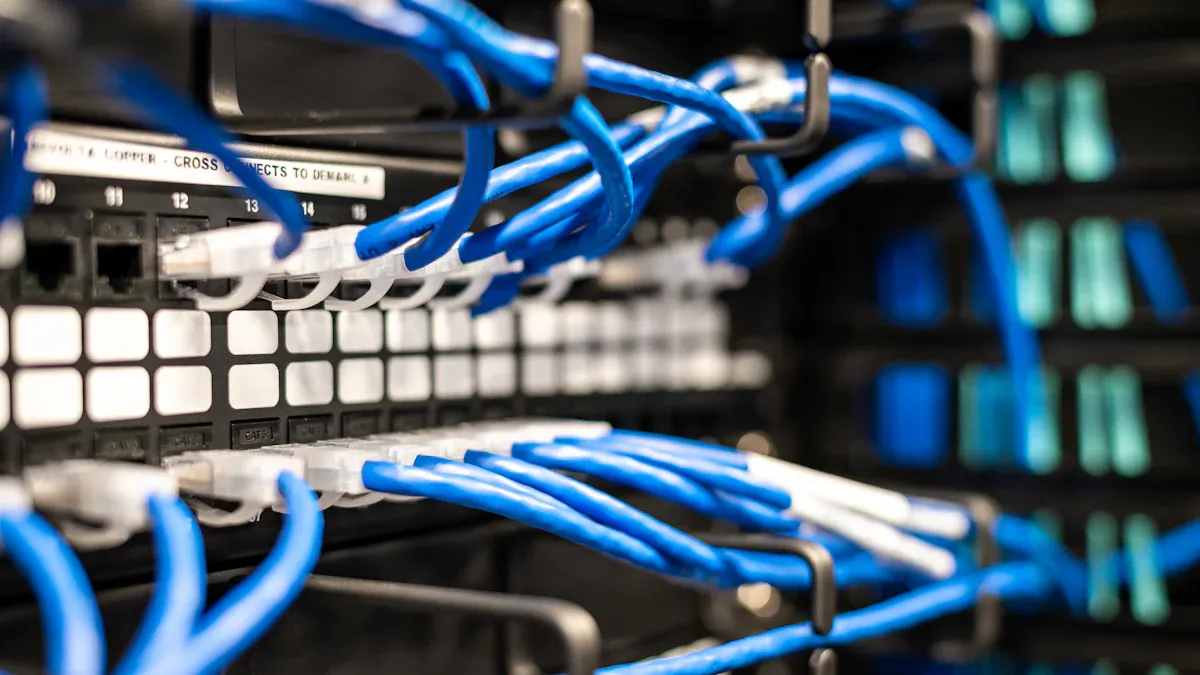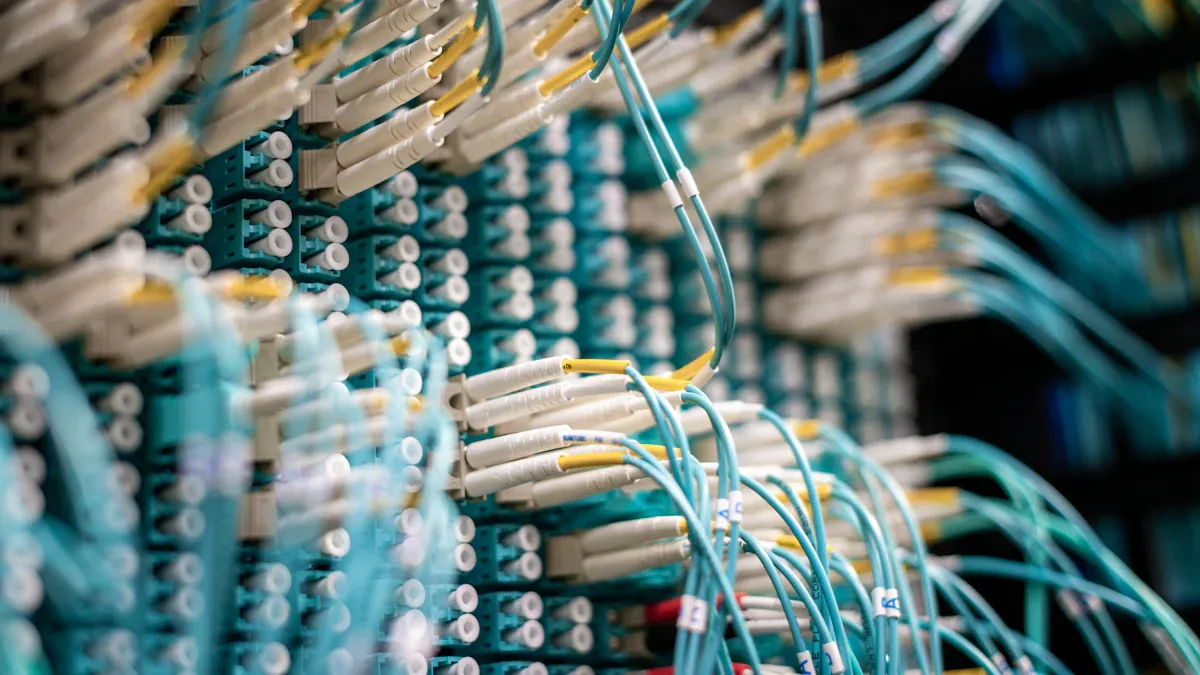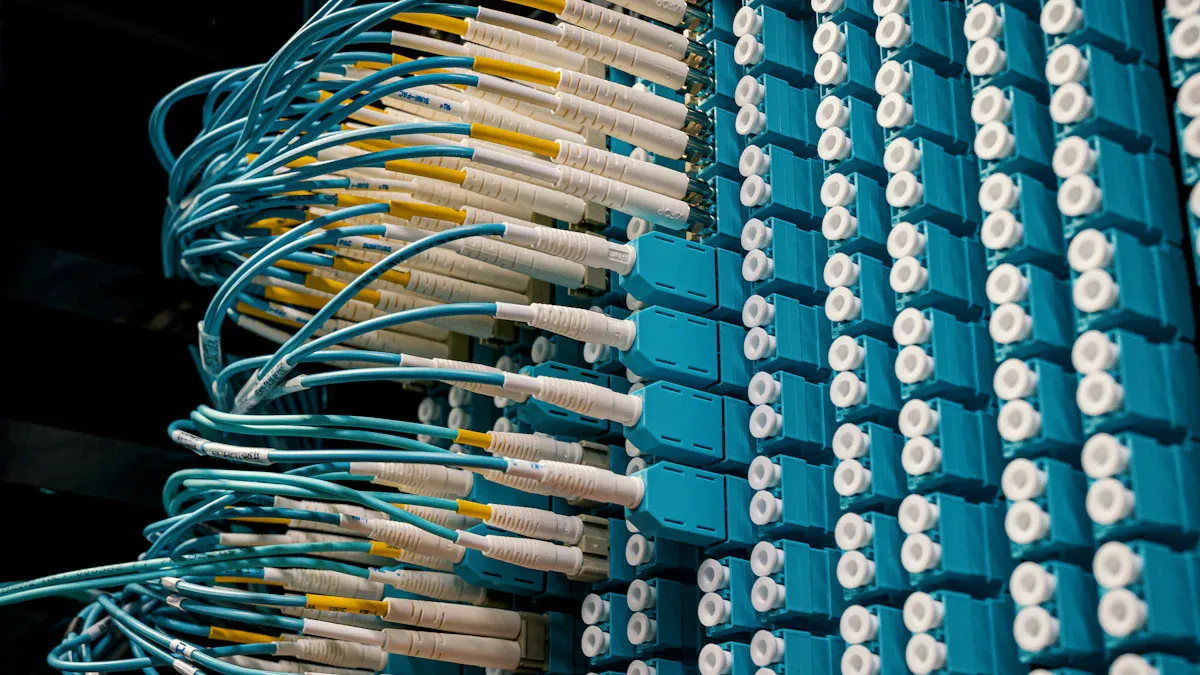How to select and install a Telecom Cabinet on Pole, including methods and safety considerations

Choosing the right telecom cabinet on pole ensures your network operates efficiently and reliably. A well-selected cabinet protects equipment from environmental challenges, such as extreme weather, and minimizes downtime. It also facilitates effective cooling, power management, and security. By ensuring compliance with industry standards, you enhance the cabinet's performance and reliability, which is critical for continuous network operation. Prioritizing these factors not only safeguards your investment but also supports long-term functionality.
Remember, selecting a cabinet tailored to your specific needs guarantees better protection and performance for your telecom infrastructure.
Key Takeaways
Pick a telecom cabinet that suits your local weather. This keeps your equipment safe from weather damage.
Choose a cabinet size that fits now and later needs. This avoids crowding and makes maintenance easier.
Focus on safety features like strong, tamper-proof locks. This helps stop theft and keeps services running smoothly.
Check the site carefully before setting up the cabinet. This avoids surprises and follows all rules.
Do regular checks and upkeep. This helps the cabinet last longer and keeps the network working well.
Selecting the Right Telecom Cabinet on Pole

Environmental Considerations
When choosing a telecom cabinet on pole, you must evaluate the environmental conditions of the installation site. Factors like temperature, humidity, and exposure to sunlight or water can significantly impact the cabinet's performance. Cabinets should be sealed and insulated to handle extreme weather conditions, such as heavy rain, snow, or high winds. Proper ventilation is also essential to prevent overheating in hot climates. Additionally, selecting a cabinet that resists UV rays and dust ensures long-term durability and protection for internal equipment.
Tip: Always choose a cabinet designed to withstand the specific environmental challenges of your location. This ensures your equipment remains safe and operational.
Size and Space Requirements
The size of the telecom cabinet on pole plays a crucial role in its functionality. A well-sized cabinet should comfortably fit all necessary components, such as communication devices, cables, and power provisions, while leaving room for future upgrades. Overcrowding can lead to overheating and make maintenance more challenging. Ensure the cabinet has sufficient width and depth to accommodate modern equipment, which often requires additional cabling. Planning for future expansion minimizes the need for costly replacements and keeps your infrastructure adaptable.
Note: Selecting a cabinet that is easy to transport, install, and maintain can save time and effort during the installation process.
Security Features
Security is a critical factor when selecting a telecom cabinet on pole. Look for cabinets with robust locking mechanisms and tamper-proof designs to prevent unauthorized access. High-security locks, reinforced hinges, and concealed locks enhance protection against theft. Some cabinets also offer advanced features like alarm systems or surveillance options for added security. Weather-resistant and corrosion-resistant materials further ensure the cabinet remains secure in harsh conditions.
Remember: Investing in a secure cabinet protects your equipment and reduces the risk of service disruptions caused by tampering or theft.
Preparing for Installation
Site Assessment
Before installing a telecom cabinet on pole, you need to conduct a thorough site assessment. This step ensures the location meets all technical and environmental requirements. Start by gathering essential tools and documents, such as a site map, floor plan, checklist, measuring tape, camera, signal meter, cable tester, and laptop. Review the project scope, budget, timeline, and customer expectations. Make sure to check regulatory standards to avoid compliance issues.
Coordinate with the site owner or manager to secure permissions and access codes. Once on-site, evaluate environmental conditions like temperature, humidity, lighting, noise, dust, and vibration levels. Identify potential hazards or interference sources, such as nearby electrical transformers. Document any risks or environmental issues. Finally, assess the existing infrastructure to confirm it can support the installation.
Tip: A detailed site assessment minimizes unexpected challenges during installation.
Pole Selection
Choosing the right pole is crucial for a stable and secure installation. Look for a pole that can handle the weight and size of the telecom cabinet on pole. Ensure the pole is structurally sound and free from damage or corrosion. Consider the height of the pole to ensure the cabinet is accessible for maintenance but out of reach of unauthorized individuals.
The pole's location also matters. Avoid areas with high foot traffic or proximity to electrical transformers, as these can pose safety risks. A well-chosen pole provides a solid foundation for your cabinet and reduces the likelihood of future issues.
Compatibility Check
Installing an incompatible telecom cabinet on pole can lead to serious risks. These include exposure to dangerous voltages, such as Earth Potential Rise (EPR), and hazards like step voltages or touch voltages. Equipment damage and safety risks for personnel are also possible outcomes. To avoid these problems, verify that the cabinet's mounting system matches the pole's specifications. Check the cabinet's weight and dimensions to ensure the pole can support it.
Additionally, confirm that the cabinet's design aligns with the site's environmental and operational requirements. A compatibility check ensures a safe and efficient installation process.
Installing a Telecom Cabinet on Pole

Tools and Equipment
Before starting the installation, gather all necessary tools and equipment. You will need basic hand tools like wrenches, screwdrivers, and pliers. A power drill with appropriate bits will help secure the cabinet to the pole. Use a level to ensure proper alignment during installation. Safety gear, including gloves, a helmet, and a harness, is essential for personal protection. For electrical connections, keep a multimeter and cable tester handy. These tools ensure that the installation process is smooth and efficient.
Tip: Double-check your tools before heading to the site to avoid delays caused by missing equipment.
Step-by-Step Installation
Position the Cabinet: Start by positioning the telecom cabinet on pole at the desired height. Use a ladder or lift for safe access.
Secure the Mounting Bracket: Attach the mounting bracket to the pole using bolts or clamps. Ensure it is tightly fastened to prevent movement.
Attach the Cabinet: Align the cabinet with the bracket and secure it using the provided hardware. Check that it is level and stable.
Connect Power and Communication Lines: Run the necessary cables through the cabinet's entry points. Use a cable tester to verify proper connections.
Seal Openings: Apply weatherproof sealants to all openings. This step protects the cabinet from water damage and pests.
Test the System: Once installed, test the cabinet's functionality to ensure everything operates as expected.
Note: Follow the manufacturer's instructions for specific mounting and connection details.
Ensuring Stability and Security
Stability and security are critical for a successful installation. Secure the cabinet to the pole with appropriate hardware to prevent vibration or movement. Ground the cabinet properly to protect against electrical hazards. For added security, choose a cabinet with sturdy locks and tamper-proof designs. Reinforced doors and panels provide extra protection. Consider installing alarms or surveillance systems for high-risk areas. These measures ensure the telecom cabinet on pole remains stable and secure over time.
Remember: A stable and secure installation minimizes maintenance needs and extends the cabinet's lifespan.
Safety Considerations for Installation
Personal Safety Measures
Your safety should always come first when installing a telecom cabinet on a pole. Working at heights and handling electrical equipment can pose significant risks. Always wear appropriate safety gear, including a helmet, gloves, and a harness. Use a sturdy ladder or lift to access the pole safely. Inspect your tools and equipment before starting the job to ensure they are in good condition.
Avoid working in bad weather, such as during heavy rain or strong winds. Wet conditions increase the risk of slipping or electrical hazards. Keep your workspace organized to prevent tripping over tools or cables. If you are working near live electrical lines, maintain a safe distance to avoid accidental contact.
Tip: Always have a first aid kit and emergency contact numbers readily available on-site.
Compliance with Local Regulations
Following local regulations ensures a safe and legal installation process. Research the rules and guidelines for telecom cabinet installations in your area. These may include height restrictions, grounding requirements, and distance from other structures. Obtain any necessary permits before starting the installation.
Adhering to electrical safety standards is crucial. For example, grounding the cabinet properly protects against electrical surges. Regulations may also specify the materials and designs suitable for your location. Compliance not only keeps you safe but also prevents fines or legal issues.
Note: Consult with local authorities or experts if you are unsure about specific requirements.
Preventing Accidents
Accidents during installation can cause injuries or damage to equipment. Identifying potential hazards helps you avoid them. Dangerous voltage can appear near telecom equipment, leading to electrical shocks. Earth Potential Rise (EPR), step voltage, and touch voltages from nearby transformers are common risks. Maintain a safe distance of 30 to 40 meters from transformers to reduce these dangers.
Secure the cabinet firmly to the pole to prevent it from falling. Use weatherproof sealants to protect cables and connections from water damage. Regularly inspect the installation site for loose bolts or damaged components. These precautions minimize the risk of accidents and ensure a stable setup.
Remember: A proactive approach to safety protects both you and your equipment.
Maintaining and Monitoring the Cabinet
Routine Maintenance
Routine maintenance ensures your telecom cabinet on pole operates efficiently and avoids unexpected failures. Regular cleaning and inspections prevent dust accumulation and keep components functioning properly. Pay special attention to the cabinet during extreme weather conditions. For example, clean outdoor cabinets in summer and ensure proper ventilation to avoid overheating. In winter, check heating systems to prevent freezing.
Here’s a simple maintenance checklist to follow:
Perform preventative checks on equipment and systems to ensure functionality.
Standardize your maintenance process for consistency.
Prepare an emergency response plan for disasters or crises.
Additionally, inspect security features regularly to ensure locks and alarms remain effective. Address any noticeable damage immediately to prevent further issues.
Tip: Seasonal maintenance, such as weatherproofing cables in fall or testing power systems in spring, helps protect your cabinet year-round.
Performance Monitoring
Monitoring the performance of your telecom cabinet on pole is essential for maintaining network reliability. Use diagnostic tools to track system efficiency and identify potential issues early. For instance, test climate control systems regularly to ensure they maintain optimal temperatures. Monitor power systems to detect fluctuations that could harm equipment.
Set up alerts for critical parameters like temperature, humidity, and power supply. These alerts allow you to respond quickly to any irregularities. Regularly review performance data to identify trends and make informed decisions about upgrades or repairs.
Remember: Proactive monitoring reduces downtime and extends the life of your equipment.
Long-Term Reliability
Ensuring long-term reliability requires a combination of regular maintenance, performance monitoring, and strategic upgrades. Replace outdated components with modern, energy-efficient alternatives to improve performance. Modular designs can help address space constraints and allow for easier future expansions.
Here’s a quick look at common maintenance issues and their solutions:
Maintenance Issue | Solution |
|---|---|
Overheating | Mitigated by advanced cooling solutions |
Security Breaches | Prevented with robust security measures |
Space Constraints | Solved with modular and wall-mounted designs |
By addressing these challenges proactively, you can ensure your telecom cabinet remains reliable for years to come.
Note: A well-maintained cabinet not only protects your investment but also supports uninterrupted network operations.
Selecting the right telecom cabinet on a pole is essential for protecting your equipment and ensuring reliable network performance. Evaluate both current and future needs to choose a cabinet that accommodates all components and allows for growth. Consider the environment and pole stability to ensure the cabinet remains secure and accessible.
Proper preparation and installation are equally important. Follow these steps for a successful setup:
Secure the cabinet with appropriate hardware to maintain stability.
Connect power and communication cables correctly to avoid malfunctions.
Seal gaps with weatherproof materials to protect against water and pests.
Regular maintenance ensures long-term reliability. Routine inspections, cleaning, and component testing enhance protection and extend the cabinet’s lifespan. These practices reduce repair costs and improve network performance over time.
Remember: A well-chosen, securely installed, and properly maintained telecom cabinet supports uninterrupted operations and safeguards your investment.
FAQ
What is the best material for a telecom cabinet on a pole?
Aluminum and stainless steel are excellent choices. Both materials resist corrosion and withstand harsh weather conditions. Aluminum is lightweight, making installation easier. Stainless steel offers superior strength and durability. Choose based on your environmental needs and budget.
💡 Tip: Always verify the material's compatibility with your location's climate.
How do you ensure the cabinet stays secure on the pole?
Use heavy-duty mounting brackets and bolts. Tighten all connections firmly to prevent movement. Ground the cabinet properly to avoid electrical hazards. For added security, select cabinets with tamper-proof locks and reinforced panels.
🔒 Note: Regularly inspect the mounting hardware to maintain stability.
Can you install a telecom cabinet on any pole?
No, not all poles are suitable. The pole must support the cabinet's weight and size. It should be structurally sound and free from damage. Avoid poles near high foot traffic or electrical transformers to reduce risks.
⚠️ Reminder: Conduct a thorough pole assessment before installation.
How often should you perform maintenance on the cabinet?
Perform maintenance at least twice a year. Inspect for dust, corrosion, and damage. Clean the cabinet and test all components, including locks and climate control systems. Seasonal checks help address weather-related issues.
🛠️ Pro Tip: Create a maintenance schedule to stay consistent.
What safety gear is essential for installation?
Wear a helmet, gloves, and a harness. Use a sturdy ladder or lift for height access. Inspect tools for damage before use. Avoid working in bad weather to minimize risks.
🚧 Safety First: Keep a first aid kit and emergency contacts on-site.
See Also
Selecting The Perfect Mount For Outdoor Telecom Cabinets
Safeguarding Equipment Using Outdoor Telecom Cabinet Solutions
Finding The Right Size For Your Telecom Cabinet
CALL US DIRECTLY
86-13752765943
3A-8, SHUIWAN 1979 SQUARE (PHASE II), NO.111, TAIZI ROAD,SHUIWAN COMMUNITY, ZHAOSHANG STREET, NANSHAN DISTRICT, SHENZHEN, GUANGDONG, CHINA

